Even as social media platforms continue to evolve, marketers will never forget their first love: Facebook. This is one of the oldest channels that stuck with marketers like a stamp on an envelope.
Despite the fact that this platform has a lower engagement rate nowadays compared with its beginnings, users still prefer to promote their products and services here.
And with great brand performance comes an even greater responsibility. That is why competitor research has become paramount for brand success in this ever-changing social media world.
To help you simplify this complex process a bit, we've put together an in-depth guide on how to become a master when it comes to Facebook competitor analysis. Let's dive in!
Everything you should know about Facebook competitors analysis
What is a Facebook competitive analysis?
Why run a Facebook page comparison between you and your competitors?
How to perform a Facebook competitor analysis
Facebook competitor analysis tools
FAQs about a Facebook competitive analysis
1. What is a Facebook competitive analysis?
A Facebook competitive analysis is the process of spying on your competitors’ activity and performance on Facebook with the purpose of collecting data that will reveal insights into how you could optimize your content strategy to gain a competitive advantage.
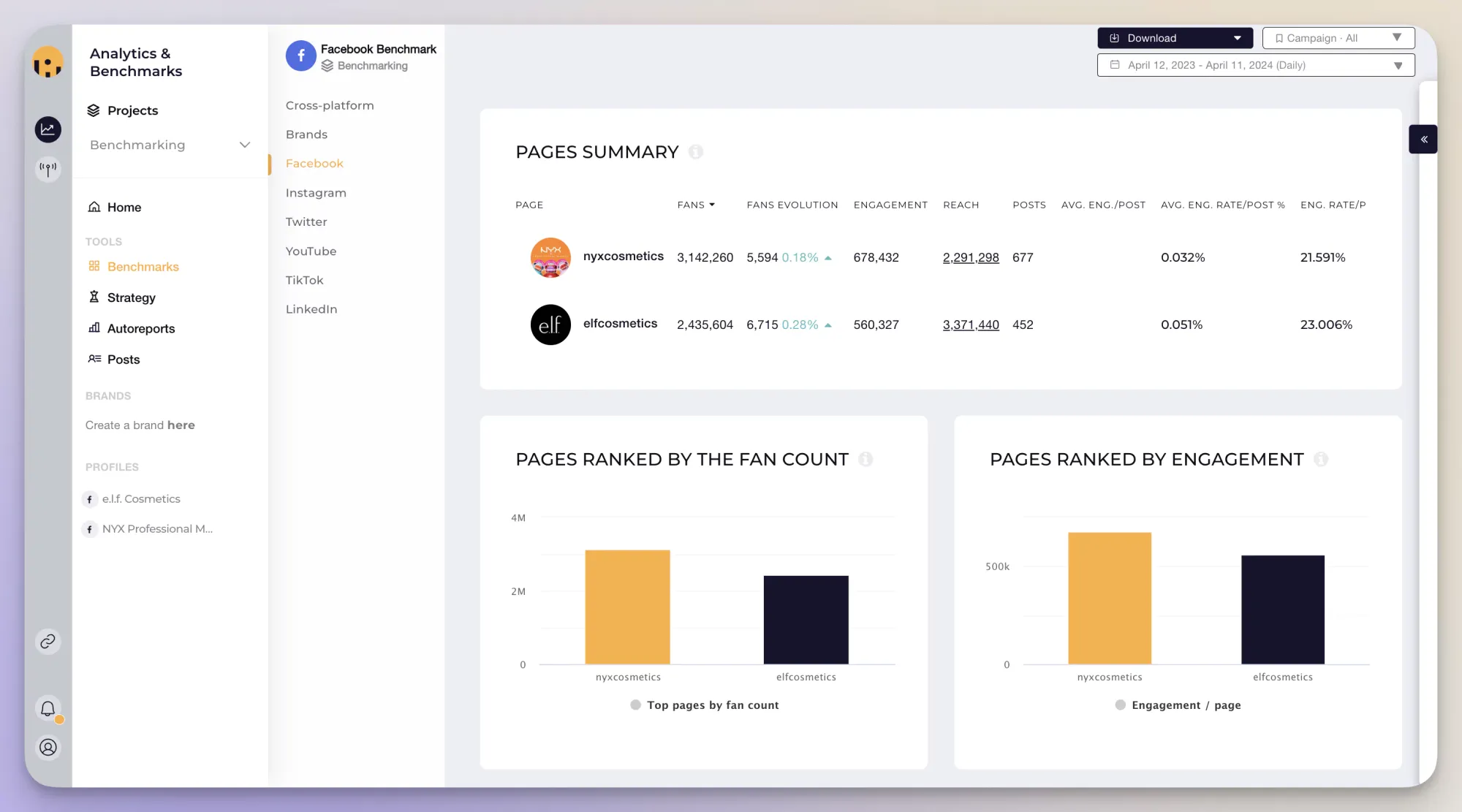
Get your Facebook competitor analysis tool!
See what your competition is doing on Facebook with Socialinsider.
2. Why run a Facebook page comparison between you and your competitors?
Running a Facebook page competitor analysis has plenty of benefits, as it is one of the most accurate sources of information on what is working within your niche and what's not.
By analyzing your competitor's Facebook KPIs and strategies, you can gain inspiration for future content, discover campaign concepts that you can leverage, and best -performing tactics that you can integrate into your Facebook marketing plan as well.
Moreover, through a Facebook competitive analysis, you can learn from your competitor's mistakes.
Also, keep in mind that for more in-depth competitive insights, you can extend your competitor's research beyond just content analysis and KPIs.
Looking into your competitor's customer service approach and Facebook mentions can help you understand the brand image they created, the awareness they have, and what are the strong differentiators of your brand that make it the best solution for your customers.
5 advantages of a competitor's analysis
There are many reasons why developing a competitive brand analysis on Facebook is a great initiative. We tried to narrow it down to the top 5 advantages, those being:
- Getting to know your customers better: most of the time, a competitor analysis will help you in better understanding the shared target group, its desires, and needs.
- Avoiding mistakes: this is a big step - monitoring your competitors on an ongoing basis will help you notice which campaign or content fails for them and avoid making the same mistakes.
- Discovering new social media channels: you're probably posting every day on Facebook, Instagram, and Twitter, but maybe there is more. What about LinkedIn or Pinterest? If your competitors are using these platforms successfully, this could be a motivation for you and give them a try.
- Understanding what the audience expects: you may have a lot of fans on Facebook, but changes are most of them don't like or comment on your posts. Look at the posts that drive conversations on your competitors' pages and pinpoint what works.
- Finding out if Facebook ads works for you: in case you haven't started Facebook ads campaigns, maybe your competitors can give some insights on how they manage social media and what their most successful ads look like.
3. How to perform a Facebook competitor analysis
1. Establish who your competitors are
First, start by learning who your competitors are. Keep an eye on your industry and niche, as well as any new brands entering on the market.
By finding out who your competitors are on Facebook, you take the first step towards attracting your audience’s attention.
Keep in mind the fact that there are two types of competitors.
Direct competitors sell products and services that are similar to yours. Indirect competitors are those businesses that create products that can replace yours.
2. Collect data-rich insights
Gathering more data about your competitors’ activity on Facebook will clearly be helpful when you plan your content strategy.
You have to learn what they are doing on social media. Closely analyze their Facebook pages and see what they post and how they interact with their audience.
With just a few clicks on their Facebook page, you will learn the essential data about your competitors.
This intel can be extremely useful in your research. Find out:
- How large is their audience?
- What tone do they use in their posts?
- How fast is their fan count growing?
- How often do they post?
- What hashtags do they use?
To perform a complete competitive brand analysis, it will be very helpful if you include all these data in an excel or a report.
3. Peak at your competitors' Facebook metrics
As you imagine, there are a lot of Facebook metrics you can track as part of your competitive analysis. It’s up to you and your brand to decide which ones you want to analyze.
Though, given that engagement & engagement, reach, impressions and follower's worth are the most relevant KPIs for evaluating a strategy's performance, we recommend starting with those.
4. Perform a SWOT analysis
A SWOT analysis means looking at your competitors’ strengths, weaknesses, opportunities, and threats.
After looking at their metrics and questioning their tactics, a SWOT analysis may come in handy to to identify strategy optimization areas for your brand.
Here are a couple of tips for when you decide to strengthen your Facebook competitive analysis report with a SWOT analysis.
In your list of strengths, include the metrics that indicate higher numbers than your own.
Under weaknesses, list all the metrics that signal they are performing poorly.
When it comes to opportunities, list gaps in your industry or niche that you think you can fill.
Threats can pose a great danger to your brand’s growth. Try to keep an eye on your industry and niche to figure out what could put your business at risk.
5. Analyze your competitors’ Facebook strategy
The next thing step you need to cover when running a Facebook competitive analysis is to take a couple of notes on how your competitors' content strategy looks like.
It may not be easy to predict their full plans, but based on the data you gather, you can figure out how they’ve developed their Facebook marketing strategy.
Pay attention if they repay their audience with contests and giveaways, and find out how often they post and what they post about.
Also, it is important to investigate if your rivals engage with their audience by replying to their comments and learn whether they are using Facebook ads.
Leveraging a professional social media analytics tool like Socialinsider will surely count towards a complete analysis of your competitors' strategy.
Facebook competitor analysis tools
Socialinsider
Socialinsider is a powerful Facebook page competitor analysis tool that enables brands to gain in-depth insights about their competitor's strategies, through its wide variety of analytics metrics.
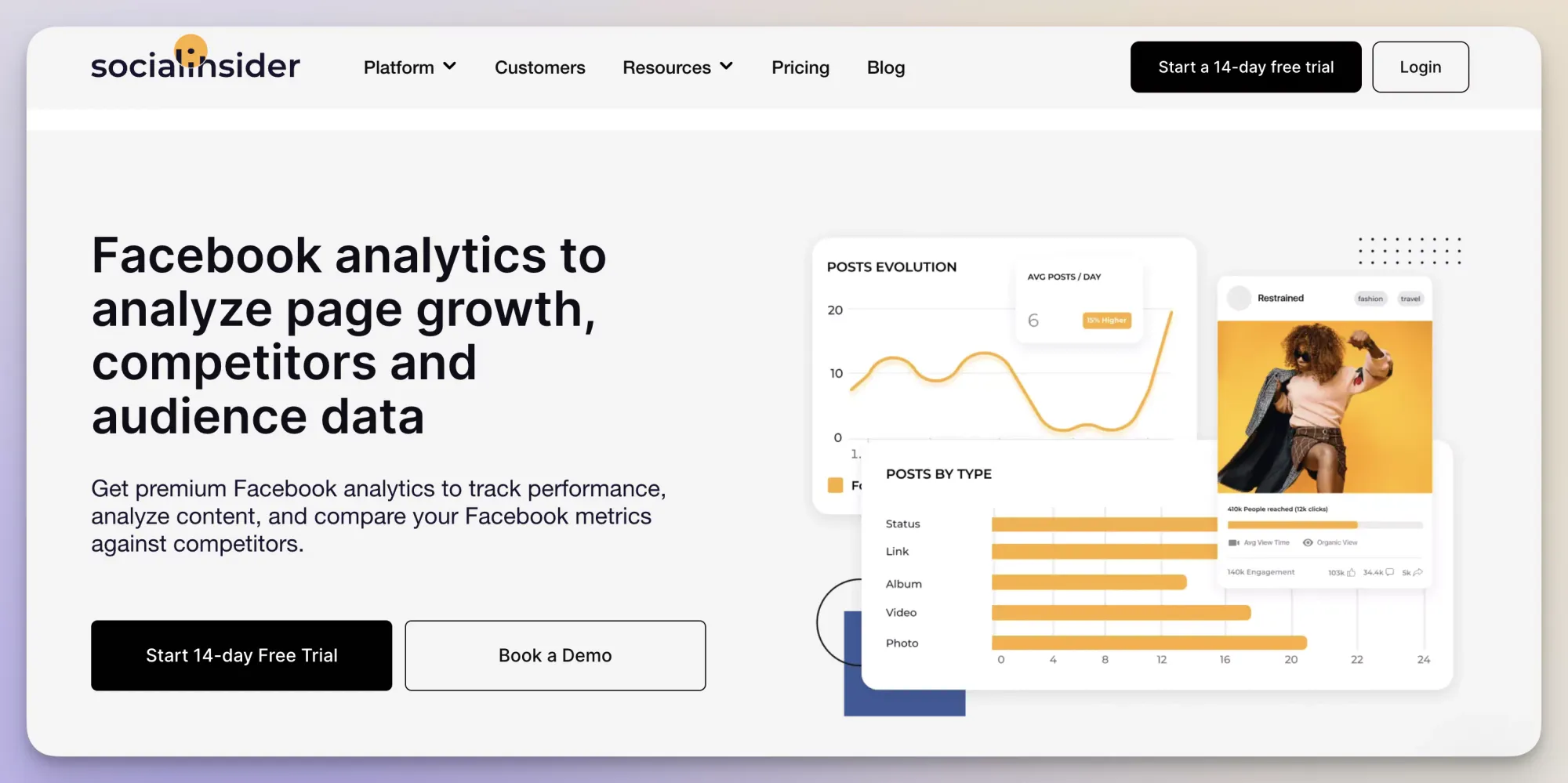
For instance, by leveraging Socialinsider, you can discover which post types bring your competitor the highest amount of engagement:
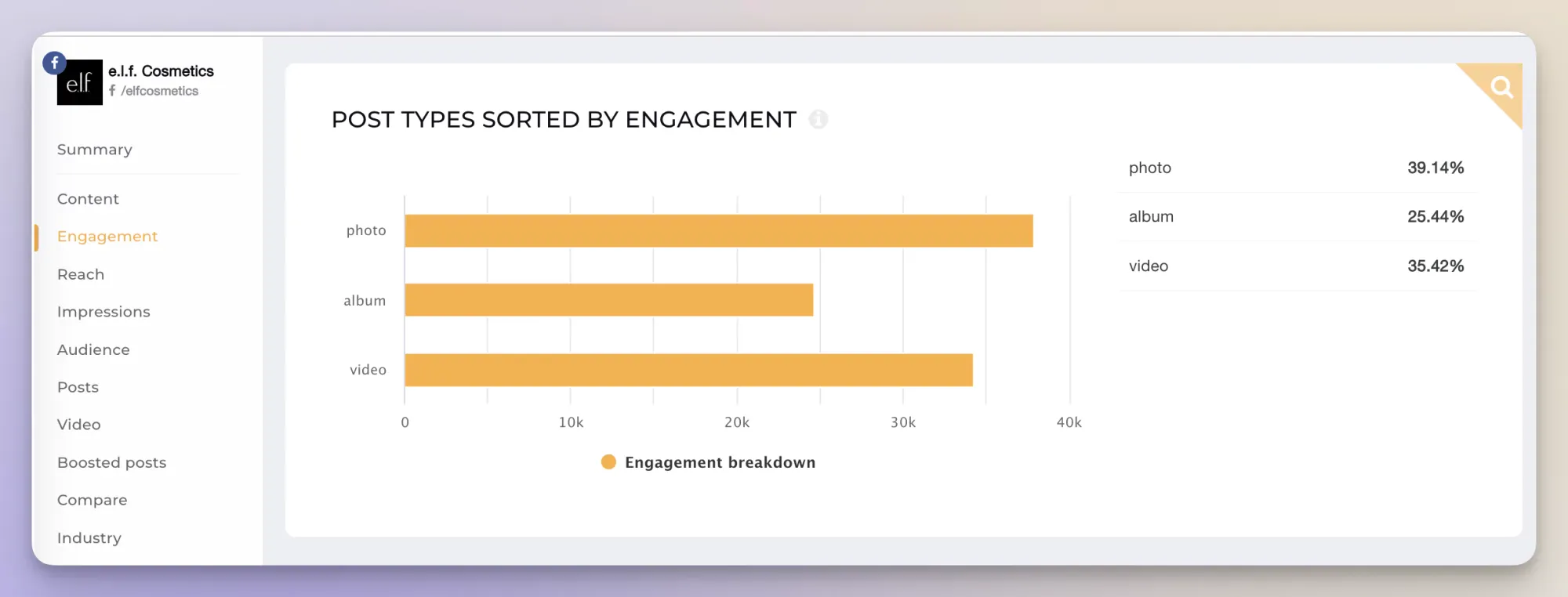
Or simply track their engagement evolution, and see if you can identify any peaks:
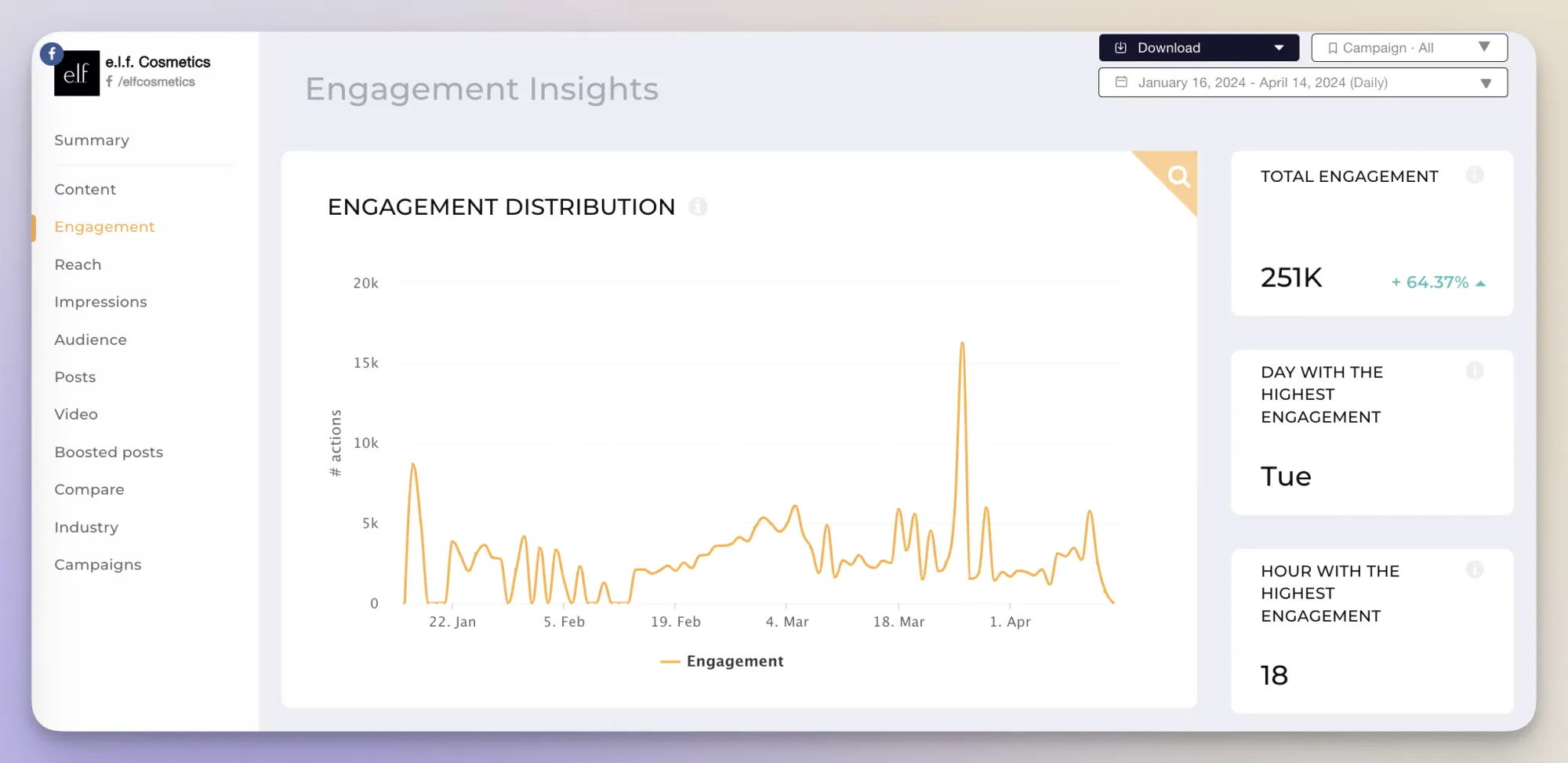
Also, if what you're looking for is a direct comparison between your competitors' performance and yours, you can easily get that from the Benchmarks section.
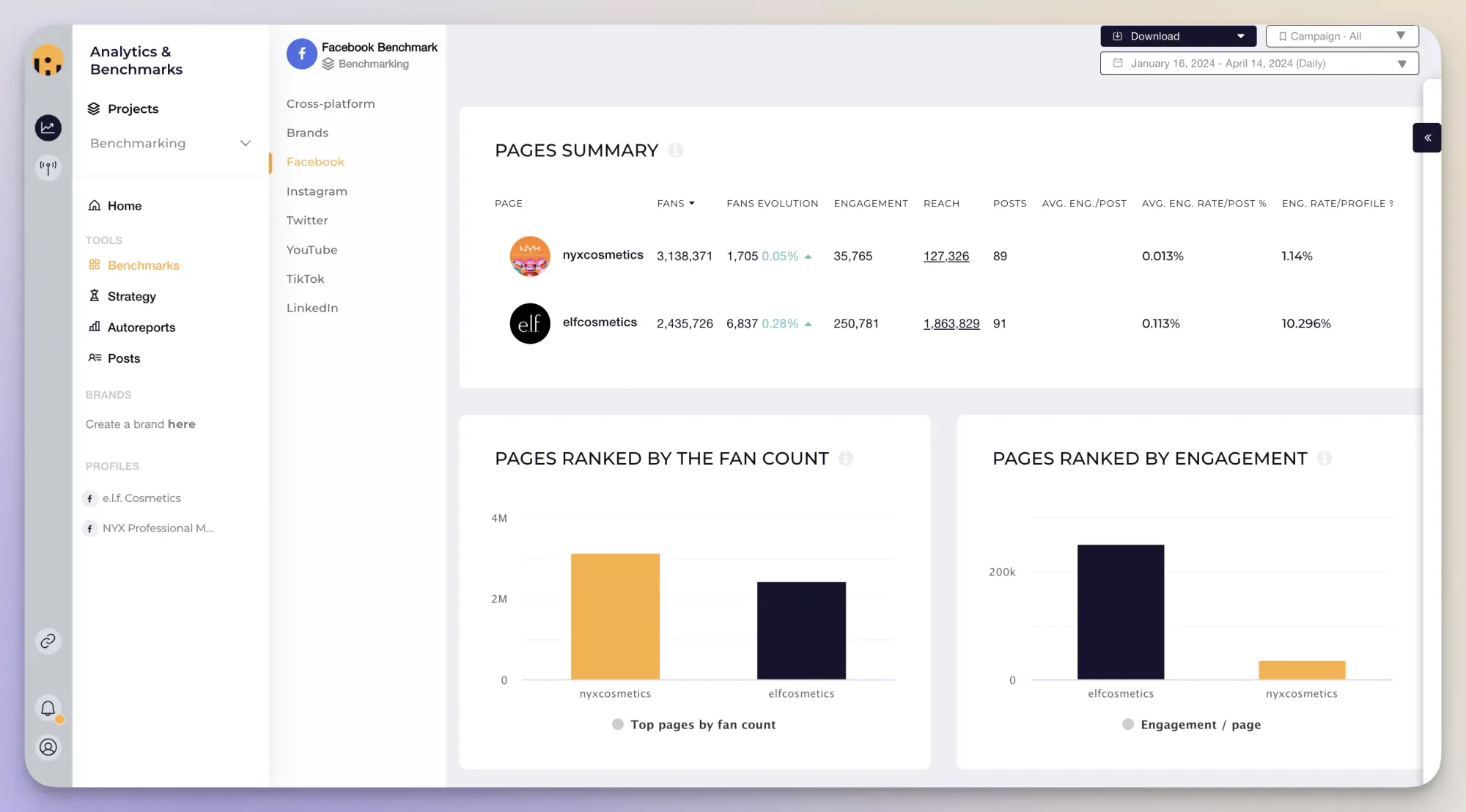
Just add the relevant profiles to the app and group them into Brands so you can access all the competitive data you need at a glance.
Pricing: starting from $82/month.
Brand24
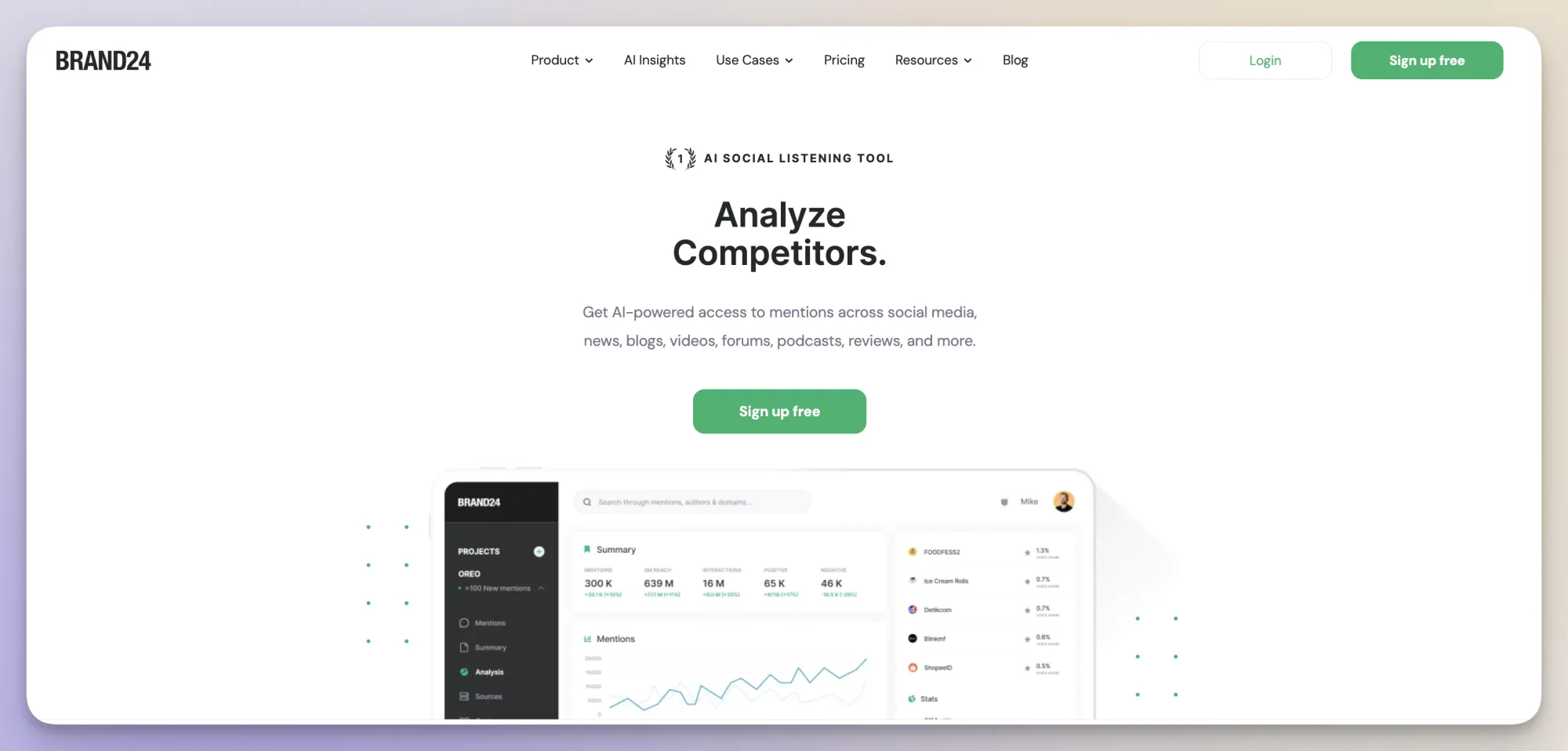
Drand24 is a listening tool that can be used to spy on your competitors' brand awareness and reputation. By monitoring mentions about your competitors across social media and the web, you can understand consumers' perceptions of your brand in comparison with your competitors.
Pricing: it starts from $79/month.
Final thoughts
Figuring out what other companies in your niche are doing on social networks can offer you insights to reveal your audience’s current habits. This way, you will know who to target.
A Facebook competitive analysis is an important step toward defining your own social media strategy because it helps you avoid making the same mistakes that your competitors did.
Moreover, it provides you with ample ideas on what might actually work well for your own Facebook page (and overall content strategy).
FAQs about a Facebook competitive analysis
How to collect the data for a competitive analysis?
Gathering data about your competitors can be done both manually and automated through a third-party data tool that enables competitor's research, be it an analytics, listening, or monitoring tool.






